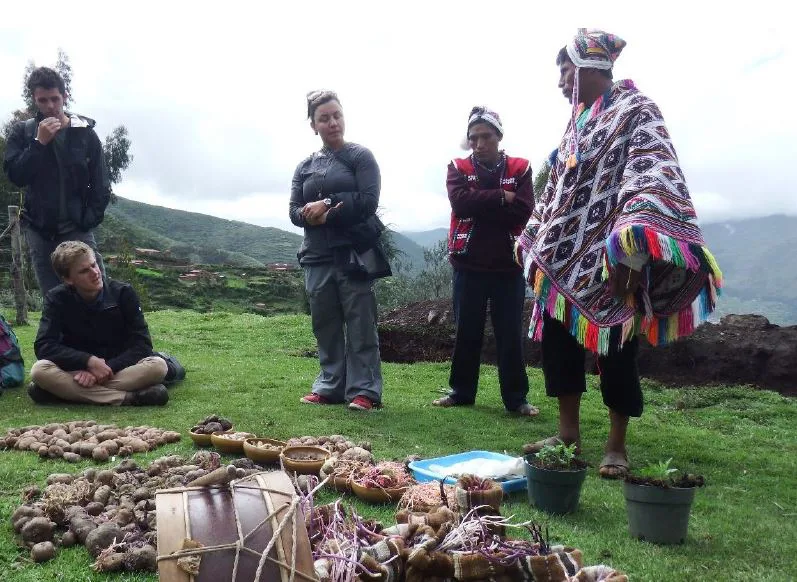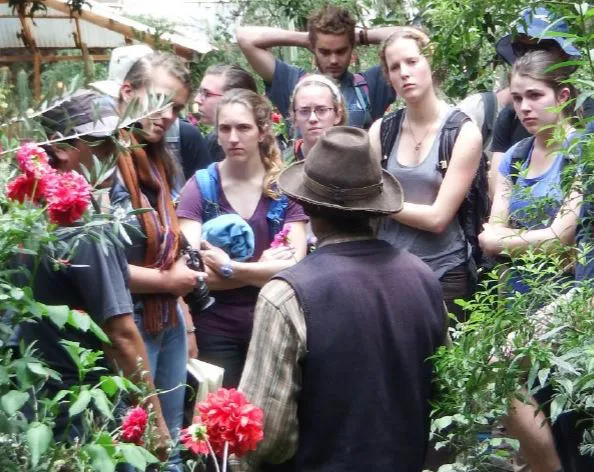Indigenous Knowledge in the Sacred Valley
One of the key goals of the Political Ecology course is to explore the interrelations of people with their local environment, particularly with regards to the socio-cultural and economic importance of the local natural resources. As we are currently living and studying in the fertile Sacred Valley, once the spiritual and commercial heart of the Inca realm, and today the home of the Indigenous Quechua peoples, we have had the opportunity to learn more about natural resource management, relational politics, and Indigenous worldviews through the lens of Indigenous Knowledge (IK) shared with us by Peru’s Andean populations.
Our first field excursion was to the Cusco Planetarium, where we learned how ancient constellations, including the “dark cloud constellations,” were studied to both establish the best times to plant or to harvest, as well as to determine how future weather patterns, such as El Niño events, might affect agricultural production. After the lecture and presentation, students had the opportunity to observe the southern hemisphere night skies through a telescope, viewing various culturally important stars, including the “eye” of the Big Llama.

“The Big Llama” Dark Cloud Constellation. Dark Cloud constellations are found within the Milky Way, and can be seen in the dark spaces between clusters of stars, forming patterns and shapes much as more traditional stellar constellations do. All Photos: Katie MacDonald
Our second field excursion was to El Parque de la Papa (the Potato Park), a cooperative of six Quechua communities working together to protect and preserve the critical role of Indigenous Biocultural Heritage (IBCH – a specialized form of IK) in the conservation and sustainable use of agrobiodiversity. Cooperative leaders explained to the class the importance of the adaptation of IK to the changing climate, and explained how these Quechua communities are working together with western science to help preserve the vast diversity of agricultural crops found within the Park.
From community members, we also learned more about Andean principles of reciprocity and relationality between three key communities, or allyus; the people, the landscape, and the forest dwellers (including both plants and animals), and how these relationships help guide the Quechua in the management of their natural resources, including heritage potatoes, ancient grains, and other useful plants, such as those used for the dying of wool for traditional handicrafts.

Learning about the incredible agrobiodiversity of potatoes managed by these Quechua communities, which includes experimenting with 1,395 different varieties of potatoes, and the preservation of 750 potato seeds. From left to right: Students Sam Eller and Nick Greatens, Program Coordinator Nicole Wischlinski, and two of our Quechua guides from Pampallaqta.
Our final field excursion for this section of the course on Andean Indigenous Knowledge was to the Pisac Botanical Gardens, where Quechua elder Mariano Rayo Flores shared with us his vast knowledge of local medicinal and sacred plants from the Valley. Exploring these opportunities and experiences of IK and natural resources management of the Quechua peoples will serve as a base of comparison for us as we shift our geographic focus in the coming weeks to the Amazonian region of Peru.

Sr. Mariano explaining to the class the use of important plants for Quechua peoples. From left to right: Students Jessica Plance, Abigail Heggenstaller, Riley Schumm, Zachary Froman, Kim Pierson, Melissa Petrich, and Julia Mitchell.
Related Posts


Alumni Reflections: Stories of the Return to Kenya
